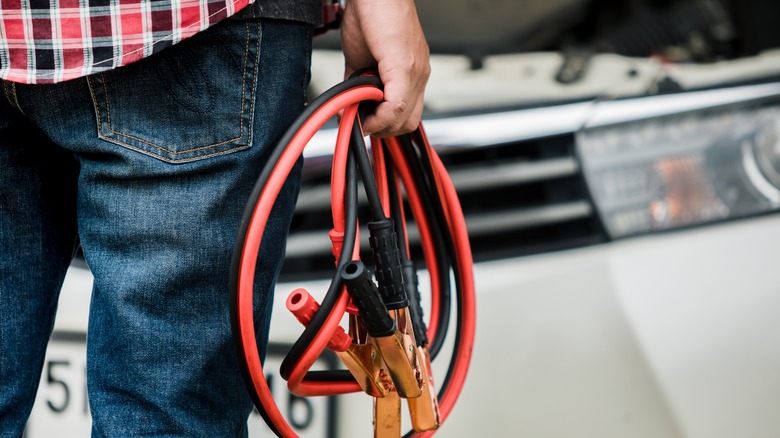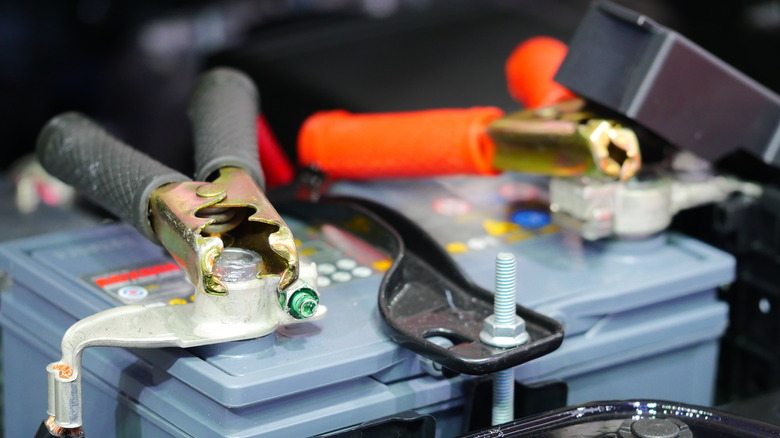Can An Electric Vehicle Jump Start A Gas Powered Car?
Those 12-volt car batteries under the hood of any gasoline or diesel car will not last forever. Symptoms like flickering cabin lights or headlights, hard starting, or heavy corrosion on the terminals all point to a weak or dying car battery. And when the battery entirely runs out of juice, you need to jump-start the engine to get moving again. All you need is a decent set of jumper cables and a donor car equipped with a robust 12-volt battery.
However, what if the donor car is an electric vehicle? Could it jump-start a gas-powered car with a dead battery? The short answer is no; jump-starting a gas-powered car using an electric vehicle is a terrible idea. Electric cars still have a 12-volt battery like gasoline cars but use it for a different purpose.
In a gas car, the battery mainly supplies power to the starter, drawing around 250 amps of juice for three seconds to start the engine. But in an electric vehicle, the 12-volt battery mainly supplies power to the onboard computer, diagnostics systems, and other accessories like the alarm and central locking. It also turns on the high-voltage battery pack resting under the floor.
Do not jump start a gas car using an EV!
If you have a gasoline car and the battery runs dry, it's better to jump-start using a similar gas-powered donor car than an EV. The 12-volt battery in most new electric vehicles cannot handle the vast currents necessary to start a gas engine, so it's best to keep electric cars away from jumper cables even in an emergency. Moreover, doing so could damage the electricals and void the EV warranty.
But what if it's the other way around? What if the 12-volt battery in an EV dies? Could you use a gas car to jump-start the 12-volt EV battery? The answer is yes, and the process is similar to jump-starting a gasoline car. Make sure to park the vehicles near but not touching each other. Grab the jumper cables, attach the red positive (+) cable to the discharged battery's positive (+) terminal, and connect the other end to the positive (+) terminal of the donor battery.
Next, attach the black negative (-) cable to the donor battery's negative (-) terminal before connecting the other end to a negative (-) grounding point of the dead battery. Start the donor vehicle, let it idle for two to five minutes, and try starting the EV. The last step is to remove the jumper cables in the reverse order. Start by disconnecting the negative before the positive wires to avoid grounds or short-circuiting the cars.

